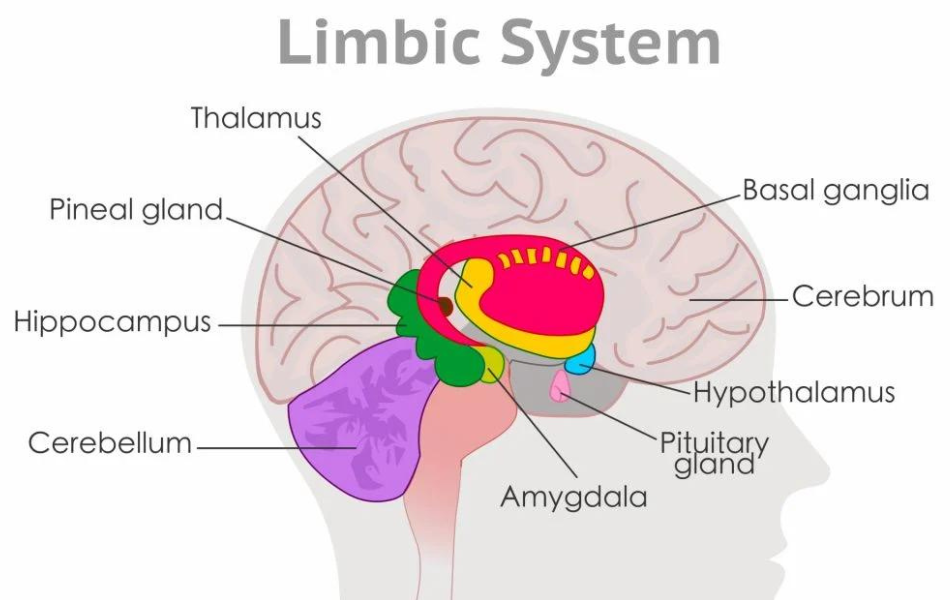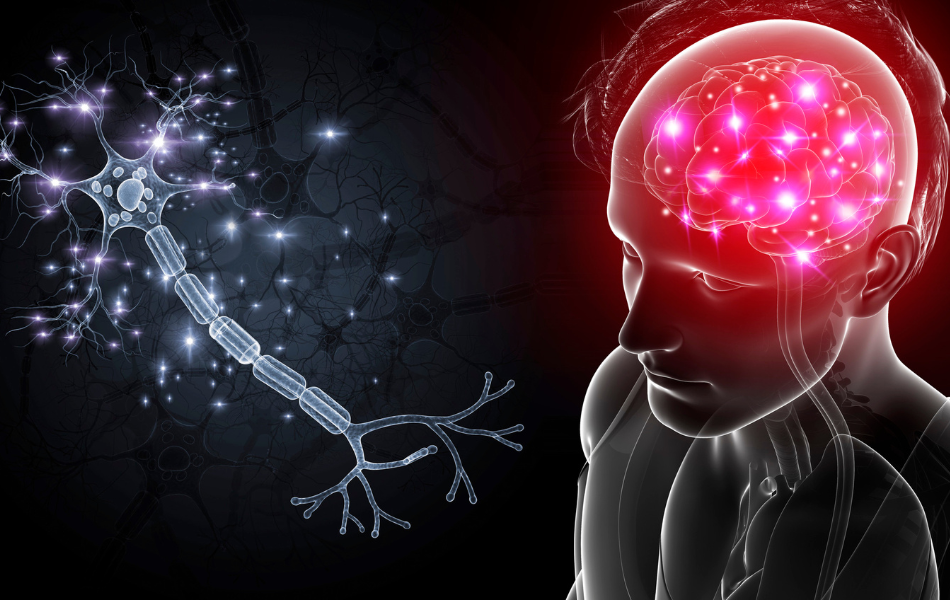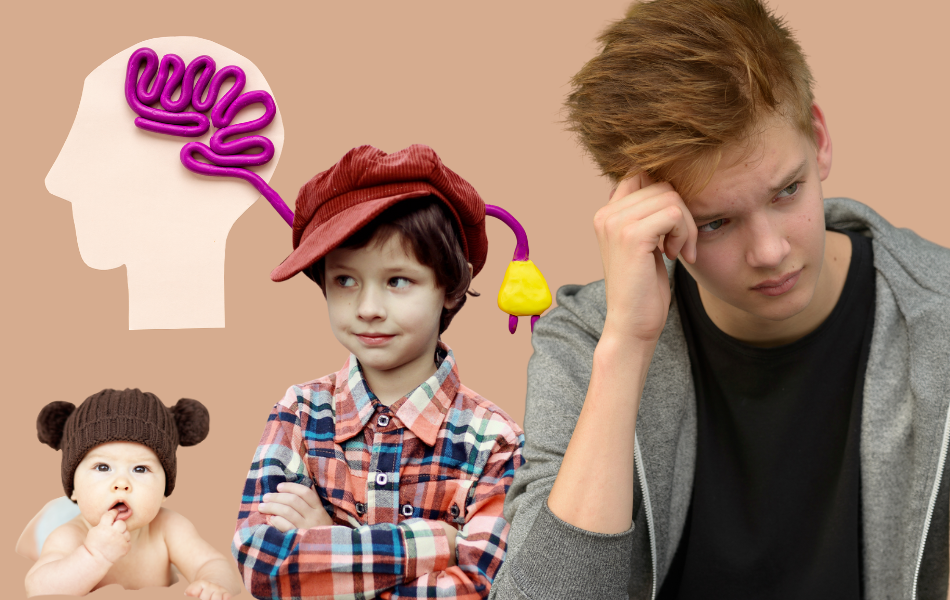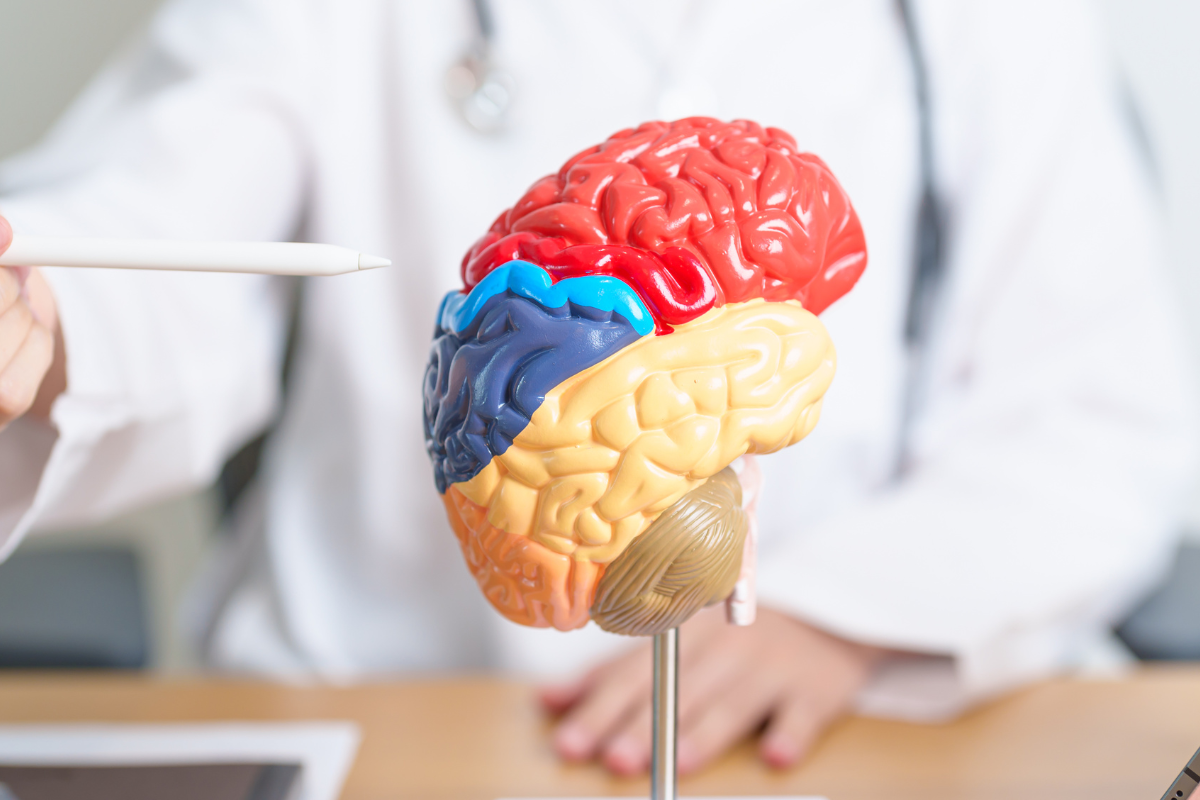Explore ‘The Brain Mechanisms Involved in Emotional Literacy’—unraveling the neural intricacies behind heightened emotional intelligence.
In the intricate landscape of human emotions, emotional literacy stands as a beacon for enhanced self-awareness and social intelligence. Understanding the brain mechanisms governing emotional literacy is key to unlocking personal growth and fostering meaningful connections. This blog explores the neurological intricacies behind emotional literacy, delving into the roles of the limbic system, neurotransmitters, the prefrontal cortex, and more. Join us on a journey through the neural pathways that shape our emotional responses, as we uncover the fascinating interplay between the mind and emotional intelligence.
The Limbic System and Emotional Processing

Introduction to the Limbic System
The limbic system, often referred to as the emotional brain, is a complex network of structures within the brain that plays a pivotal role in shaping our emotional experiences and responses. Comprising the amygdala, hippocampus, thalamus, and hypothalamus, the limbic system orchestrates the intricate dance of emotions, memory, and behavioral regulation.
Let’s go on a journey into the heart of the limbic system, exploring its individual components and their collective influence on our understanding, processing, and expression of emotions. Join us as we unravel the mysteries of this fascinating neural ensemble.
If you would like to read further a book by Gabriel Joseph, Limbic System: Amygdala, Hypothalamus, Septal Nuclei, Cingulate is a super read.
Amygdala’s Role in Emotional Responses
The amygdala, a small almond-shaped cluster of nuclei nestled deep within the temporal lobe, stands as a sentinel of our emotional experiences. This enigmatic structure is a linchpin in the limbic system, wielding profound influence over our emotional responses. Its primary role is twofold: as an emotional vigilant and memory maestro. The amygdala swiftly assesses incoming stimuli, particularly those laden with emotional significance, to orchestrate our fight-or-flight responses.
Moreover, it acts as a custodian of emotional memories, imprinting significant events and shaping our future reactions.
Fear and Threat Detection:
- The amygdala is a rapid-response center for detecting potential threats in our environment. It processes sensory information, particularly visual and auditory cues, with remarkable speed. When a potential threat is identified, the amygdala triggers the release of stress hormones, preparing the body for a fight-or-flight response. This evolutionary function enabled our ancestors to swiftly respond to dangers, and in the modern context, it continues to play a crucial role in our ability to navigate and survive in challenging situations.
Emotional Memory Formation:
- The amygdala is integral to the formation and storage of emotional memories. It enhances the consolidation of memories associated with emotionally charged events. This emotional tagging ensures that significant experiences are remembered vividly, influencing future behavior and responses. Whether positive or negative, emotionally charged memories sculpt our perceptions and guide decision-making. The intricate interplay between the amygdala and memory formation sheds light on how our past emotional experiences contribute to shaping our present emotional responses.
The Hippocampus and its Contribution to Emotional Learning

The hippocampus, a seahorse-shaped structure nestled deep within the brain, plays a pivotal role in emotional learning and memory. It serves as a crucial hub for processing and integrating emotional experiences into our cognitive framework. Here’s a closer look at the hippocampus’s contribution to emotional learning
Integration of Emotion and Cognition
- The hippocampus acts as a bridge between the emotional and cognitive domains. It receives input from the amygdala, which processes emotional stimuli, and integrates this information into the broader context of our experiences. This integration is vital for creating a comprehensive understanding of emotionally charged events.
Formation of Contextual Memories
- The hippocampus is particularly involved in the formation of contextual memories associated with emotions. It helps link various elements of an experience, such as time, location, and sensory details, to the emotional tone of the event. This contextualization enhances the richness and specificity of emotional memories, contributing to a nuanced and detailed recollection.
Spatial Navigation and Emotional Context
- Beyond memory, the hippocampus is crucial for spatial navigation. Studies suggest a strong connection between spatial memory and emotional experiences. As we navigate through our environments, the hippocampus encodes not only spatial information but also the emotional context associated with specific locations, further intertwining emotion and memory.
Neurogenesis and Adaptive Learning
- The hippocampus exhibits a unique capacity for neurogenesis, the generation of new neurons. This process is implicated in learning and adapting to new emotional experiences. Neuroplasticity within the hippocampus allows for the incorporation of novel information, facilitating the updating and refinement of emotional memories over time.
Understanding the hippocampus’s role in emotional learning provides insights into how our brains encode, consolidate, and retrieve emotionally significant information. This knowledge is essential for comprehending the intricacies of emotional intelligence and the adaptive nature of our responses to the world around us.
The connection between the Limbic System and Emotional Literacy
The limbic system, a complex network of interconnected brain structures, serves as the neural command center for emotional processing, and its profound influence extends to the realm of emotional literacy. Here’s a closer look at the intricate connection between the limbic system and emotional literacy:
Emotional Processing Hub
- The limbic system, comprising the amygdala, hippocampus, thalamus, and hypothalamus, collectively processes and interprets emotional stimuli. This emotional processing lays the foundation for the development of emotional literacy, as individuals learn to recognize, understand, and manage their own emotions and those of others.
Amygdala’s Role in Emotional Awareness
- The amygdala, a key player in the limbic system, is central to emotional awareness. Its rapid assessment of emotional cues contributes to the recognition of emotions, especially in social situations. As individuals become more adept at interpreting these cues, their emotional literacy flourishes, enabling them to navigate social interactions with greater sensitivity and understanding.
Hippocampus and Emotional Memory
- The hippocampus, another limbic system component, facilitates the formation of emotional memories. These memories, intertwined with the emotional context of experiences, contribute to a rich emotional vocabulary. Emotional literacy involves not just recognizing current emotions but also drawing on past experiences to inform one’s emotional responses and interpretations.
Thalamus and Sensory Integration
- The thalamus, acting as the sensory relay station within the limbic system, plays a crucial role in integrating sensory information related to emotions. This integration contributes to a holistic understanding of emotional experiences. As individuals become adept at processing and integrating sensory input, their emotional literacy expands to encompass a broader range of emotional nuances.
Hypothalamus and Emotional Regulation
- The hypothalamus, integral to the limbic system, is involved in regulating emotional responses through the release of hormones. Emotional literacy goes beyond mere recognition and understanding; it involves the ability to regulate one’s emotions effectively. The interplay between the hypothalamus and emotional regulation mechanisms contributes to this vital aspect of emotional intelligence.
Understanding the connection between the limbic system and emotional literacy provides valuable insights into the neurological underpinnings of emotional intelligence. As individuals navigate the intricate landscape of emotions, the limbic system serves as a guiding compass, shaping the development of emotional literacy and fostering meaningful connections with oneself and others.
Neurotransmitters and Hormones in Emotional Regulation

A. Serotonin and its Impact on Mood
Serotonin, often dubbed the “feel-good” neurotransmitter, plays a crucial role in regulating mood and emotional well-being. Concentrated in the brain’s limbic system, it modulates various emotional states, including happiness, anxiety, and overall emotional stability. Adequate serotonin levels contribute to a positive mood, while imbalances are associated with mood disorders such as depression. Understanding the role of serotonin unveils its significance in shaping emotional states and highlights its implications for emotional literacy.
B. Dopamine’s Role in Reward and Pleasure
Dopamine, a neurotransmitter associated with the brain’s reward system, is a key player in shaping emotional responses to pleasurable stimuli. Released in response to rewarding experiences, dopamine reinforces behaviors linked to pleasure and motivates individuals to seek out such experiences. In the context of emotional literacy, understanding dopamine’s role provides insights into the neurological basis of motivation, reinforcement, and the pursuit of positive emotional states.
C. Oxytocin and Vasopressin in Social Bonding and Empathy
Oxytocin and vasopressin, often referred to as the “bonding hormones,” are pivotal in fostering social connections and empathy. Oxytocin, released during social interactions and bonding experiences, enhances trust and emotional connection. Vasopressin complements this by influencing social behaviors and pair bonding. The interplay of these hormones contributes to the development of empathy, strengthening social bonds, and enriching emotional understanding within relationships.
D. The Interplay of Neurotransmitters in Emotional Literacy
Emotional literacy is a multifaceted skill that involves the coordinated interplay of various neurotransmitters. Serotonin regulates mood stability, dopamine motivates through pleasure and reward, and oxytocin and vasopressin foster social bonding and empathy.
The balanced functioning of these neurotransmitters is essential for emotional regulation, effective communication, and empathetic understanding. Dysregulation or imbalance in this intricate interplay may contribute to emotional challenges and impact one’s ability to navigate and comprehend emotions, emphasizing the importance of a harmonious neurotransmitter system in the pursuit of emotional literacy. Understanding this interplay provides a holistic view of the neural mechanisms shaping emotional intelligence.
Prefrontal Cortex and Executive Functions

The prefrontal cortex (PFC), situated at the front of the brain, is a sophisticated region that distinguishes humans from other species. Often referred to as the “CEO of the brain,” the PFC is associated with higher cognitive functions, personality expression, decision-making, and social behavior. Its development and intricate neural connections make it a crucial player in emotional intelligence, influencing how individuals perceive, comprehend, and respond to emotions.
Executive Functions and Emotional Regulation
The prefrontal cortex governs executive functions, a set of cognitive processes crucial for regulating and controlling behavior, thoughts, and emotions. This includes:
Decision-Making:
- The PFC, particularly the ventromedial prefrontal cortex, is integral to decision-making processes. It evaluates potential outcomes, weighs consequences, and considers emotional implications. A well-functioning PFC supports informed decision-making, a cornerstone of emotional intelligence.
Impulse Control:
- Executive functions mediated by the PFC, especially the dorsolateral prefrontal cortex, are crucial for impulse control. This involves resisting immediate impulses in favor of more thoughtful and socially appropriate responses. Effective impulse control is fundamental to navigating emotional situations with maturity and foresight.
Empathy and Perspective-Taking
- The PFC, in collaboration with other brain regions, facilitates empathy and perspective-taking. It allows individuals to understand and share the emotions of others, fostering a deeper emotional connection. The ability to consider alternative viewpoints contributes to social awareness and effective interpersonal communication.
Role of Prefrontal Cortex in Developing Emotional Intelligence
The prefrontal cortex is instrumental in the development of emotional intelligence. Its ongoing maturation, particularly during adolescence, corresponds with advancements in emotional regulation and interpersonal skills. As individuals enhance their executive functions, they become more adept at recognizing, understanding, and managing emotions, both within themselves and in others.
The PFC’s role in emotional intelligence extends beyond its individual functions; it integrates information from various brain regions to provide a comprehensive understanding of emotional experiences. Its connectivity with the limbic system allows for a nuanced interpretation of emotional cues. Exploring the dynamic interplay between the prefrontal cortex and emotional intelligence unveils the neural foundation that underlies the complex landscape of human emotions and social interactions.
Neural Plasticity and Emotional Learning
Neural plasticity, often referred to as brain plasticity or neuroplasticity, is the brain’s remarkable ability to adapt and reorganize itself in response to experiences, learning, and environmental changes. It involves the strengthening or weakening of neural connections, the formation of new synapses, and the restructuring of existing networks. This dynamic process occurs at various scales, from microscopic changes at the synaptic level to more extensive modifications in neural circuits.
How the Brain Adapts to Emotional Experiences
Neural plasticity is particularly evident in the realm of emotional learning. When individuals encounter emotionally charged situations, the brain undergoes adaptive changes to encode and process these experiences. The amygdala, hippocampus, and prefrontal cortex—the key players in emotional processing and regulation—demonstrate plasticity in response to emotional stimuli. This adaptability allows for the formation of emotional memories, the refinement of emotional regulation strategies, and the development of emotional intelligence over time.
The Impact of Emotional Learning on Neural Connections
Emotional learning induces changes in neural connections that influence how the brain responds to similar emotional stimuli in the future. Positive emotional experiences can strengthen neural pathways associated with resilience and well-being, while negative experiences may lead to adaptations that contribute to emotional regulation challenges. The plastic nature of the brain allows for ongoing adjustments, enabling individuals to learn from emotional experiences and refine their emotional responses based on past learning.
Strategies to Enhance Neural Plasticity for Improved Emotional Literacy
Mindfulness and Meditation:
- Practices that promote mindfulness and meditation have been linked to increased neural plasticity. These techniques encourage focused attention and can positively impact the structure and function of the brain areas involved in emotional regulation.
Cognitive-Behavioral Therapy (CBT):
- CBT is an evidence-based therapeutic approach that leverages neural plasticity to rewire maladaptive thought patterns and behaviors. By targeting specific cognitive processes, CBT promotes positive changes in emotional responses and coping mechanisms.
Physical Exercise:
- Regular physical exercise has been shown to enhance neural plasticity, particularly in the hippocampus. This not only supports overall cognitive function but also contributes to improved emotional learning and memory.
Lifelong Learning and Novel Experiences:
- Engaging in continuous learning and exposing oneself to new experiences can stimulate neural plasticity. This can be particularly beneficial for emotional learning, as novel experiences provide opportunities for the brain to adapt and integrate new emotional information.
Understanding the interplay between neural plasticity and emotional learning sheds light on the brain’s capacity for growth and adaptation in the emotional domain. It emphasizes the potential for ongoing development of emotional intelligence and resilience throughout the lifespan.
The Role of Mirror Neurons in Empathy

Mirror neurons are specialized cells in the brain that fire not only when an individual performs a particular action but also when they observe someone else engaging in the same or a similar action. Discovered in the early 1990s, primarily in the premotor cortex and the inferior parietal cortex, mirror neurons have since been recognized as crucial components in understanding and imitating the actions and emotions of others.
A great book to read, from Amazon is I Am Your Mirror: Mirror Neurons and Empathy
Mirror Neurons in Understanding Others’ Emotions
Mirror neurons play a pivotal role in the recognition and understanding of others’ emotions. When we observe someone experiencing an emotion, the mirror neurons associated with that emotion fire in our brains, creating a neural resonance. This mirroring mechanism allows individuals to simulate and internally experience the emotional states of others, forming the basis for emotional empathy. For example, if we witness someone smiling, our mirror neurons associated with smiling activate, providing an internal representation of the observed emotion.
Connection between Mirror Neurons and Empathetic Responses
The activation of mirror neurons contributes significantly to empathetic responses. By mirroring the emotions of others, these neurons enable individuals to “feel with” and understand the emotional experiences of those around them. This shared emotional experience fosters a sense of connection and empathy, essential for building social bonds and facilitating effective communication. Mirror neurons, in essence, serve as a neural bridge that allows individuals to resonate with the emotional states of others, promoting a deeper understanding of their feelings.
Training and Strengthening Mirror Neuron Activity
Observational Learning:
- Engaging in observational learning, where individuals actively pay attention to others’ emotions and actions, can enhance mirror neuron activity. By consciously observing and internalizing emotional expressions, individuals can strengthen the neural circuits associated with empathy.
Practicing Perspective-Taking:
- Actively practicing perspective-taking exercises encourages the activation of mirror neurons. This involves mentally stepping into someone else’s shoes, imagining their emotions, and considering their point of view. Such exercises reinforce the empathetic functions of mirror neurons.
Empathy-Building Activities:
- Participating in activities that cultivate empathy, such as group discussions, storytelling, or role-playing scenarios, can stimulate mirror neuron activity. These activities provide opportunities for individuals to connect emotionally with others, reinforcing the neural pathways associated with empathy.
Mindfulness and Meditation:
- Mindfulness practices, including meditation, have been linked to increased activity in brain regions housing mirror neurons. By fostering present-moment awareness, mindfulness can amplify the responsiveness of mirror neurons, promoting a deeper understanding of one’s own and others’ emotions.
Understanding the role of mirror neurons in empathy unveils the neural mechanisms that underpin our ability to connect emotionally with those around us. As we explore ways to train and strengthen mirror neuron activity, we gain valuable insights into enhancing empathetic responses and fostering more compassionate interactions in our social environments.
Emotional Literacy Development Across the Lifespan

In the formative years of childhood, emotional literacy lays its roots. Children learn to identify and express their emotions, building the foundation for effective communication. Caregivers play a crucial role in nurturing emotional development by providing a supportive environment that encourages emotional expression and validation. Early experiences shape the understanding of emotions and set the stage for more complex emotional literacy skills in the future.
Adolescence and Emotional Regulation Challenges
Adolescence marks a period of heightened emotional intensity and the development of more sophisticated emotional regulation skills. Hormonal changes, peer interactions, and the quest for identity can pose challenges to emotional regulation. It becomes essential for adolescents to learn adaptive coping strategies, self-reflection, and effective communication to navigate the complexities of their emotions. Education and support during this stage contribute significantly to the cultivation of robust emotional literacy.
Adulthood and Continued Emotional Learning
Emotional learning is a lifelong process, and adulthood offers opportunities for continued growth. Experiences in personal and professional life provide a rich recipe for refining emotional intelligence. As responsibilities evolve, individuals often encounter diverse emotional situations, requiring ongoing adaptation and learning. Emotional literacy in adulthood involves honing skills such as conflict resolution, empathy, and resilience, contributing to enhanced emotional well-being.
Strategies for Enhancing Emotional Literacy at Any Age
Mindfulness Practices:
- Engaging in mindfulness practices, such as meditation and mindful breathing, fosters self-awareness and emotional regulation. These techniques provide individuals with the tools to stay present and navigate emotions effectively.
Reflective Journaling:
- Keeping a reflective journal allows individuals to explore and articulate their emotions. This practice encourages self-reflection and insight, promoting a deeper understanding of personal emotional experiences.
Seeking Feedback:
- Actively seeking feedback from trusted friends, family, or colleagues provides valuable external perspectives on one’s emotional responses. Constructive feedback fosters self-awareness and facilitates growth in emotional intelligence.
Participating in Emotional Intelligence Programs:
- Enrolling in emotional intelligence training programs or workshops provides structured guidance for developing emotional literacy skills. These programs often cover topics such as self-awareness, social awareness, and relationship management.
Cultivating Empathy:
- Actively practicing empathy by putting oneself in others’ shoes enhances emotional literacy. Engaging in empathetic conversations, actively listening, and validating others’ emotions contribute to a well-rounded emotional intelligence skill set.
Emphasizing emotional literacy across the lifespan recognizes its dynamic nature and the need for continuous development. By implementing these strategies, individuals can foster a heightened awareness of their emotions, cultivate empathy, and navigate the complexities of human interaction with greater emotional intelligence.
Real-Life Applications of Emotional Literacy in Children

Enhanced Communication Skills
- Children with strong emotional literacy can express their feelings effectively, fostering open communication with family and friends. This skill enables them to articulate their needs, concerns, and joys, leading to healthier relationships.
Conflict Resolution
- Emotional literacy equips children with the ability to navigate conflicts constructively. They learn to understand others’ perspectives, manage their emotions during disagreements, and collaborate towards resolutions, strengthening interpersonal bonds.
Empathy and Compassion
- A foundation in emotional literacy cultivates empathy in children. They develop the capacity to understand and share others’ emotions, promoting kindness, compassion, and the ability to form deeper connections with peers.
In conclusion, delving into the intricate neural mechanisms, developmental milestones, and real-life applications of emotional literacy illuminates its profound impact on personal growth, relationships, and success. By understanding and harnessing the power of emotions, individuals can navigate life’s complexities with resilience, empathy, and enriched emotional intelligence.
Other Related Articles in This Category of RESEARCH & INSIGHTS
- Unveiling the Heart: Tracing the Roots of Emotional Literacy
- Insights from Psychological Studies on Children Literacy
- Emotional Development Milestones in Children
Frequently Asked Questions

| 1. How can I improve my emotional literacy? Practice mindfulness, engage in reflective journaling, and seek feedback to enhance self-awareness and understanding of emotions. |
| 2. What is the role of mirror neurons in empathy? Mirror neurons facilitate empathy by mirroring others’ emotions in our brains, allowing us to understand and connect emotionally. |
| 3. Why is emotional literacy important for children? Emotional literacy in children promotes effective communication, conflict resolution, and the development of empathy, crucial for healthy relationships. |
| 4. Can emotional intelligence be developed in adulthood? Yes, engaging in mindfulness, seeking feedback, and participating in emotional intelligence programs can enhance emotional literacy throughout adulthood. |
| 5. How does the prefrontal cortex contribute to emotional intelligence? The prefrontal cortex governs executive functions, influencing decision-making, impulse control, and empathy, crucial components of emotional intelligence. |
Recent Posts
Discover how different parenting styles influence your child’s emotional growth and learn practical strategies to help them regulate emotions effectively. The way you parent today could shape...
Break the Cycle: Heal to Truly Support Your Children. Learn how childhood emotional neglect or abuse shapes parenting, and how to create lasting change. I’m writing this blog from personal...

